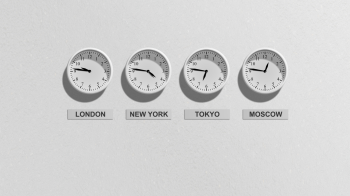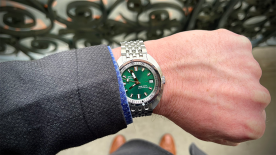When we think about timezones, we think about GMT (Greenwich Mean Time), the system that uses the meridian running through the Greenwich Royal Observatory as the line of demarcation between calendar days. This concept is so fixed in our consciousness that most English-speakers still use “GMT” to refer to the reference system of international timezones, even though it was effectively replaced by the UTC time standard in 1963.
Here’s the interesting thing, though. The abbreviation UTC doesn’t actually mean anything. It is referred to in full as Coordinated Universal Time in English and Temps Universel Coordonné in French. It doesn’t take a genius to figure out that neither of those phrases forms the initialism UTC. This initialism exists because global scientific and technology agencies such as the International Telecommunication Union and the International Astronomical Union wanted a single standard term that could be used across all languages for greater clarity. In order to pacify delegates from both English-speaking and French-speaking camps, and to reconcile the nationalist ego contest of CUT vs. TUC, the nonsensical formation UTC was eventually agreed upon. The worst kind of compromise ever, the kind where both parties feel that getting what they want is less important than making sure the other guy doesn’t get what he wants.
Based on this supremely rational execution of international cultural and geographical diplomacy, we have the system of time zones, 15° slices of the planet that are theoretically one hour apart in terms of solar progression. You would think that this naturally leads to the creation of 24 time zones. You would be wrong.
There are currently 37 time zones in use, because some countries choose to implement 30-minute or 45-minute offsets instead of the full hour. I have not been able to ascertain if any of these countries contain a higher percentage of the type of people who will take ages in a crowded restaurant to customise their dinner order with special kitchen requests while everyone else just orders from the regular menu. But if there’s anyone out there who would like to undertake this academic investigation, I think it would be a completely justifiable use of research dollars.
On the other end of the spectrum from these extremely specific and precise time zones, we have countries so powerful that they are able to bend the fabric of spacetime, classifying entire landmasses in one time zone when they are physically located in another. My home country, Singapore, uses UTC+8 as local time despite being around 960km east from the longitude that would actually allow it to qualify for this time zone. Through sheer force of will (along with diplomatic and economic exigencies, perhaps), Singapore has placed itself in chronometric alignment with Beijing and Hong Kong, true-born natives of UTC+8.
One might say that one hour doesn’t make much difference one way or another. Countries who continue to use Daylight Savings Time certainly don’t seem to mind if they arbitrarily lose or gain an hour overnight. More than that, however, and I’m pretty sure things start to feel really bizarre. Despite its breathtaking size, China uses one single local time throughout all its territories. This means that Xinjiang, the westernmost part of China, which is longitudinally in line with Kazakhstan and Pakistan, has the same local time as Heilongjiang, the easternmost part of China, which shares a meridian with Australia and Papua New Guinea. That’s a five-time-zone range.
At least China sticks to the assigned UTC system, though. You know how they say the Scandinavians are all about logic and systematic behaviour? You can throw that idea straight out of the window. Denmark never adopted UTC in the first place. They calculate time based strictly on Earth’s rotation, meaning they’re continually out of step with the rest of the world — not by much, there’s a margin of error of about one second. Returning to my restaurant analogy, Denmark is the guy who insists on Domino’s Pizza when everyone else already agreed to go to Burger King. On top of that, Greenland occupies time zones UTC-1 to UTC-5, but uses UTC+1 (or more precisely, the Danish equivalent of UTC+1) because it is a Danish territory. It’s enough to make you want to abandon Earth and go live in space.
Time is what you make of it, or so the saying goes. It can be given an initialism that bears zero relation to the actual phrase it represents. It can have no link whatsoever to the scientifically established ways of determining your longitudinal position on Earth. It appears that time, as long as you have the right kind of authority behind you, can be whatever you want it to be.






